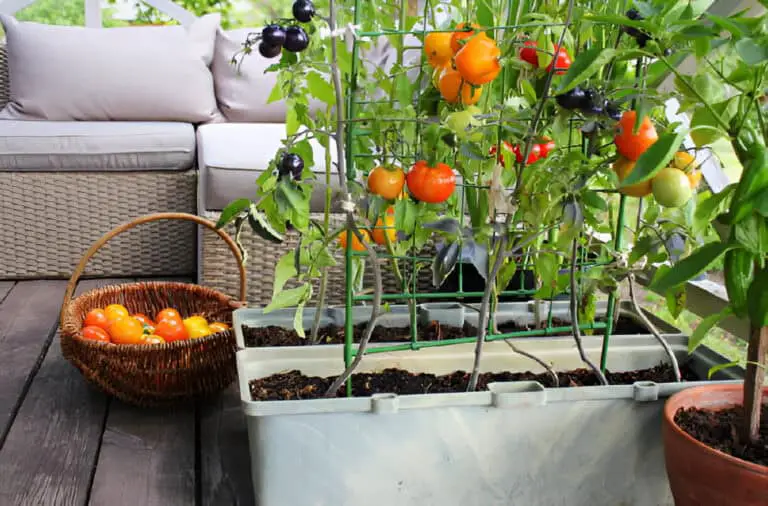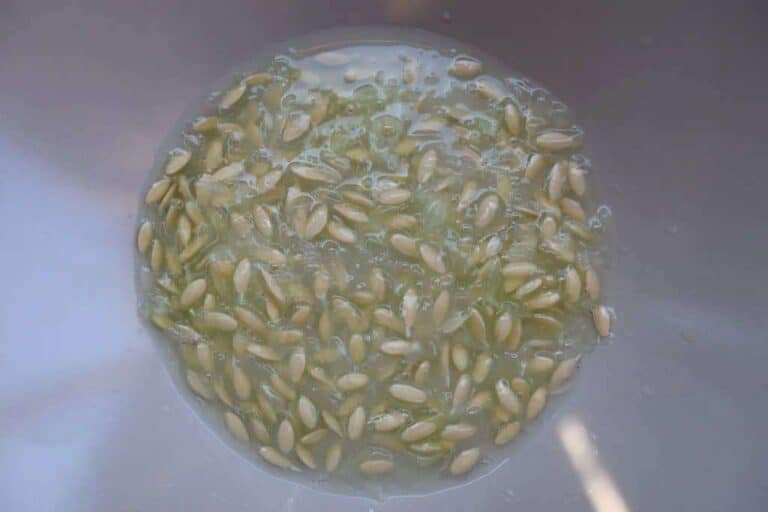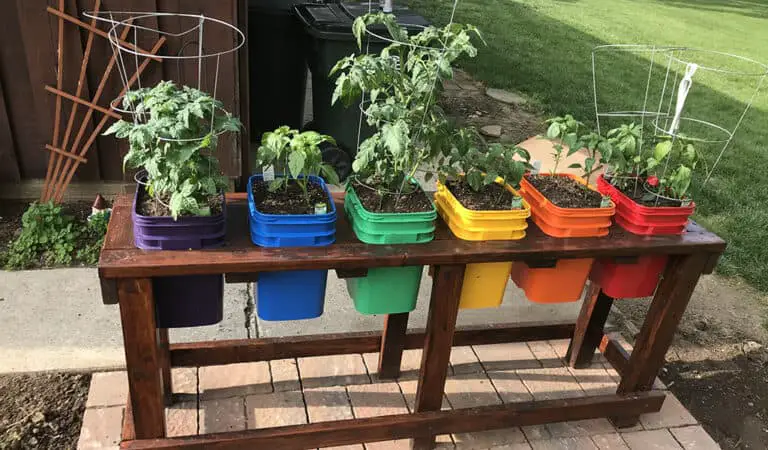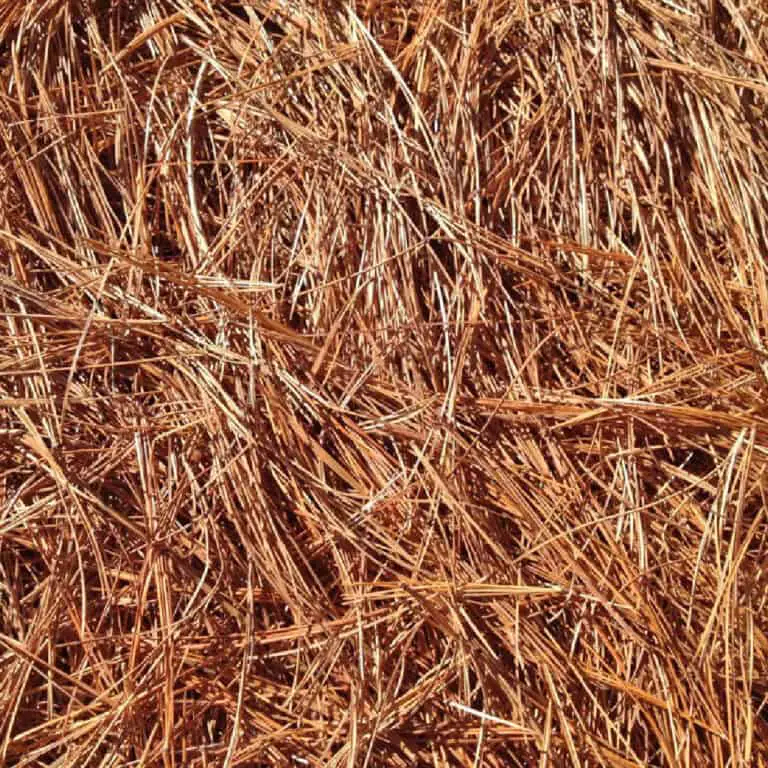7 Different Types of Puffball Mushrooms (With Pictures)
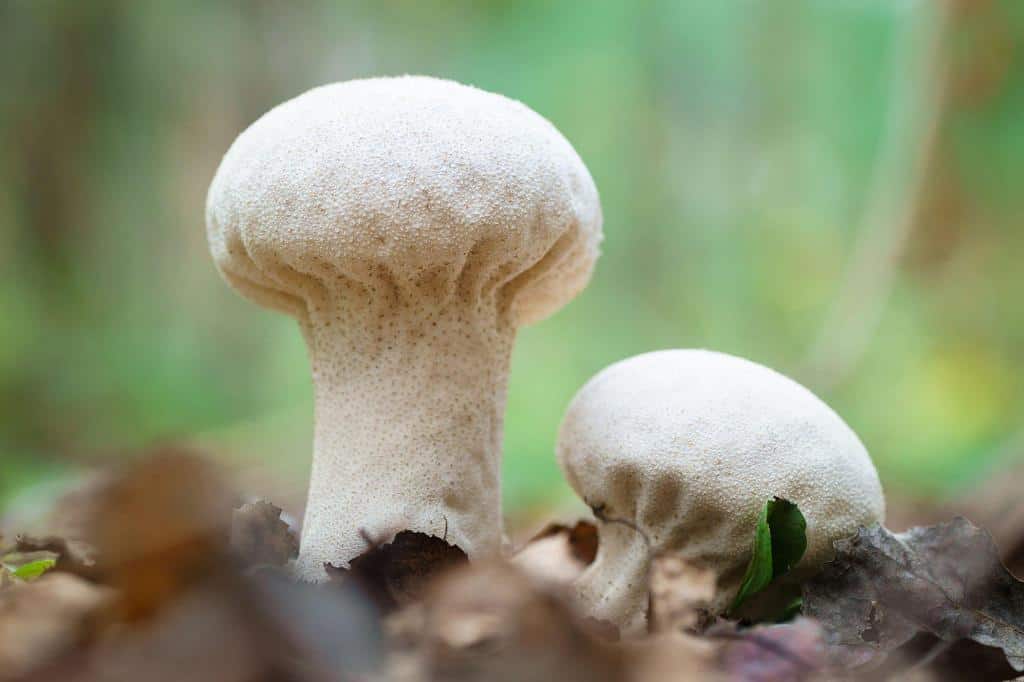
Mushrooms have an undeniable allure, from their earthy flavors to their mysterious appearance in the wild. Among these captivating fungi, puffball mushrooms stand out as unique and intriguing. But did you know that the world of puffballs is not just about the common round white ones you might have seen? There’s a diverse family of puffball mushrooms, each with its own distinct charm and culinary potential.
In this exploration, we’ll introduce you to seven types of puffball mushrooms. It includes vivid pictures to pique your curiosity. The mushrooms come in a delightful array of shapes, sizes, and textures. They range from the colossal Giant Puffball to the intricately spined Gem-studded Puffball.
Whether you’re an experienced forager or a curious foodie, this article will take you on a journey through the enchanting world of puffball mushrooms. Join us as we find these hidden treasures of the mushroom kingdom. We invite you to admire their beauty and taste their flavors like never before.
Introduction to Puffball Mushrooms
Before we dive into the specific types of puffball mushrooms, let’s briefly introduce these intriguing fungi. Puffballs belong to the family Agaricaceae and are known for their spherical shape and lack of a traditional cap and gills. Instead, they produce spores inside the fruiting body, which transform into a powdery mass when mature.
Puffballs are generally considered safe to eat when they are young and still pure white inside. As they age, some may turn yellow or brown, and their texture becomes less desirable. Now, let’s meet the seven different types of puffball mushrooms.
Overview of Puffball Mushrooms Life Cycle and Reproductive Processes
Puffball mushrooms have a fascinating life cycle. They have round, often white, and spore-filled fruiting bodies. This is due to their unique way of reproducing. The spores start small and spread by wind or other means. They settle in good spots, like nutrient-rich soil or decaying organic matter. The spores germinate when conditions are right. They form delicate, thread-like structures called mycelium.
The network of mycelium then grows, taking in nutrients from the substrate around it and eventually turning into a dense mass of mycelium.
As the mycelium matures, it develops into a primordium. This is a small, round structure. It later transforms into the puffball mushroom’s recognizable fruiting body. Within this fruiting body, spore production occurs, with millions of spores generated in a specialized tissue called the gleba.
The mature puffball, when ready for spore dispersal, typically develops a pore or opening at the top. External disturbances, like raindrops or animal contact, can cause the puffball to burst. It releases a cloud of powdery spores into the air. These spores then disperse to new locations, continuing the cycle of reproduction and propagation.
In summary, puffball mushrooms have a life cycle. It includes spore spread, sprouting, mycelium growth, primordium formation, and finally, spore release.
This complex process keeps puffball mushroom populations alive in many ecosystems. It helps to keep nutrients moving and to make a wide range of fungal communities.
7 Different Types of Puffball Mushrooms
1. Common Puffball (Lycoperdon perlatum):

- Size: Small to medium-sized, typically around the size of a golf ball or slightly larger.
- Exterior: Smooth and white, with tiny spines on the surface.
- Interior: White when young, transitioning to a brown spore mass as it matures.
- Habitat: Often found in grassy areas, meadows, and woodlands.
2. Giant Puffball (Calvatia gigantea):
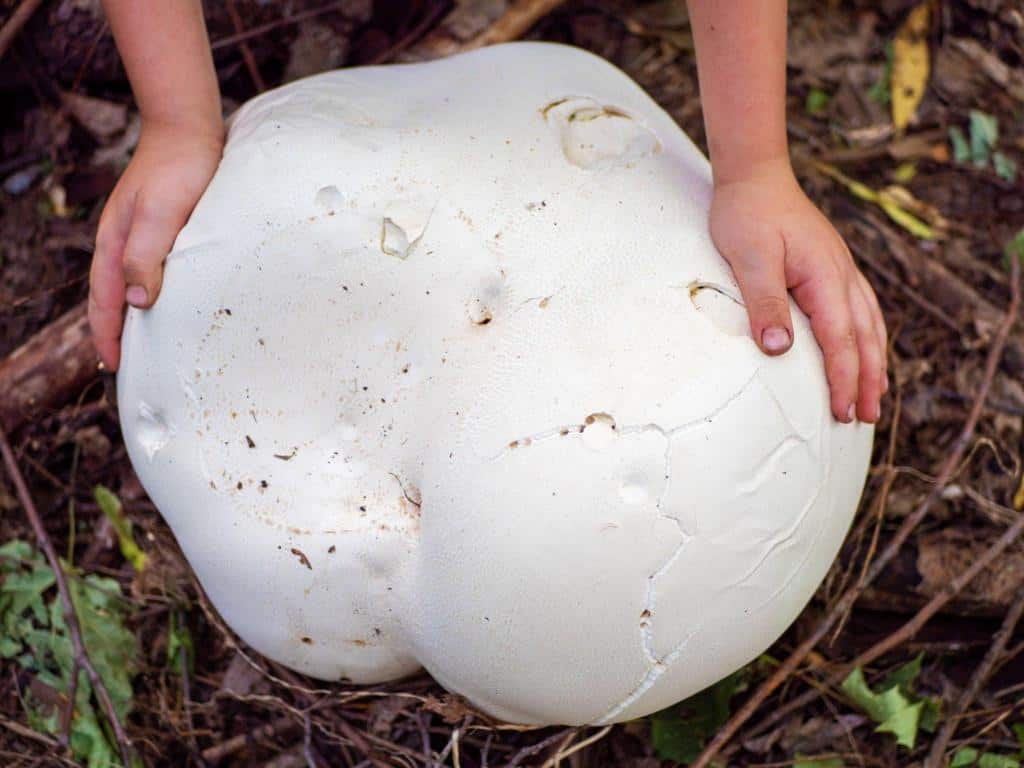
- Size: Giant Puffballs can grow to be immense, often reaching up to 1 meter in diameter.
- Exterior: When young, they have a pure white, smooth exterior.
- Interior: In their prime, the interior remains white and firm, making them suitable for consumption. However, as they mature, they turn yellow-brown and develop a less appealing texture.
- Habitat: Giant Puffballs are typically found in open areas, such as grassy fields and pastures.
3. Gem-studded Puffball (Lycoperdon perlatum):
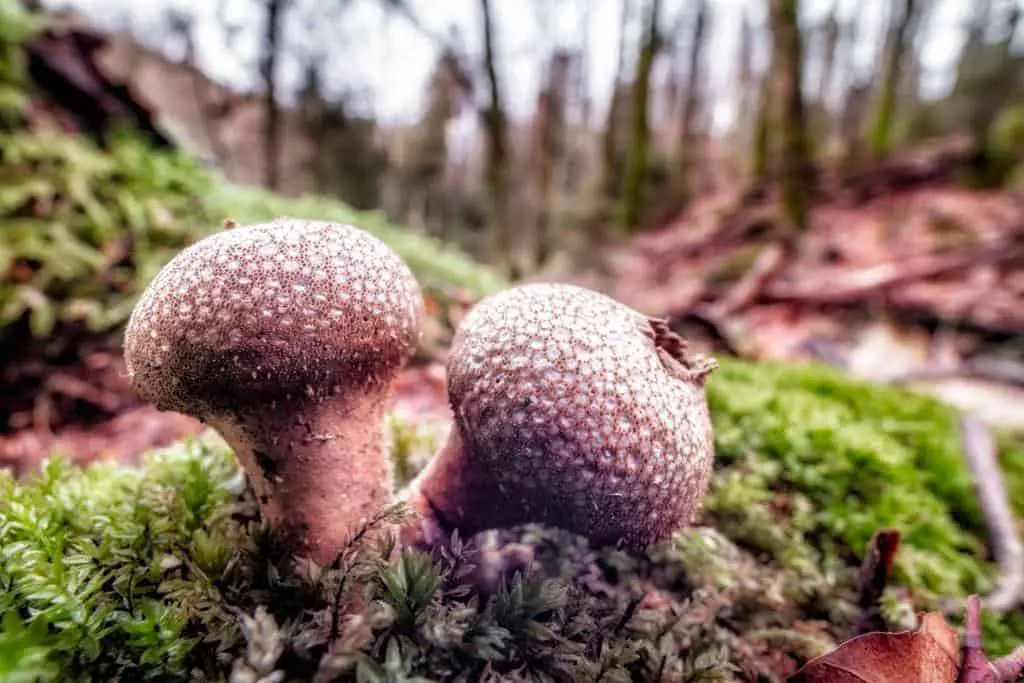
- Size: Gem-studded Puffballs are relatively small, with a diameter ranging from 1 to 4 centimeters.
- Exterior: They feature small, round puffballs covered in conical spines. These spines are more noticeable when the puffball is young.
- Interior: The interior remains white and firm when they are young, making them suitable for consumption.
- Habitat: These puffballs are often found in woodlands and other natural areas with rich soil.
4. Devil’s Snuffbox (Lycoperdon pulcherrimum):
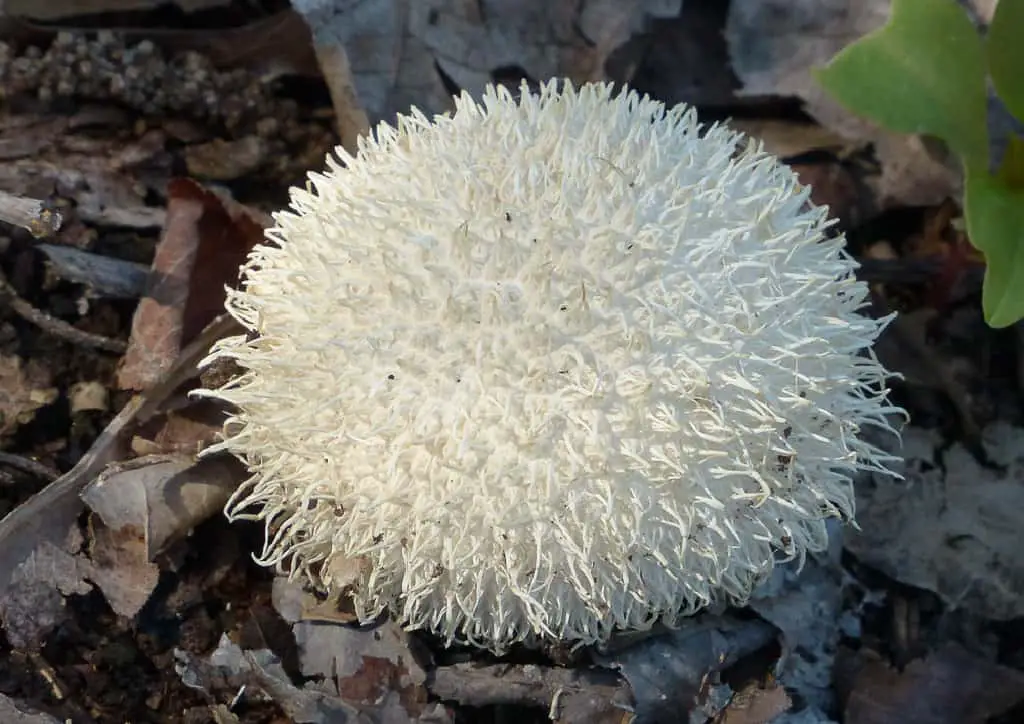
- Size: Devil’s Snuffbox puffballs range in size from 2 to 8 centimeters in diameter.
- Exterior: They have a creamy white exterior with a delicate outer layer.
- Interior: The interior remains white and has a pleasant texture, making them suitable for consumption.
- Habitat: Devil’s Snuffbox is often found in wooded areas and can be encountered in leaf litter.
5. Skull-shaped Puffball (Bovista plumbea):
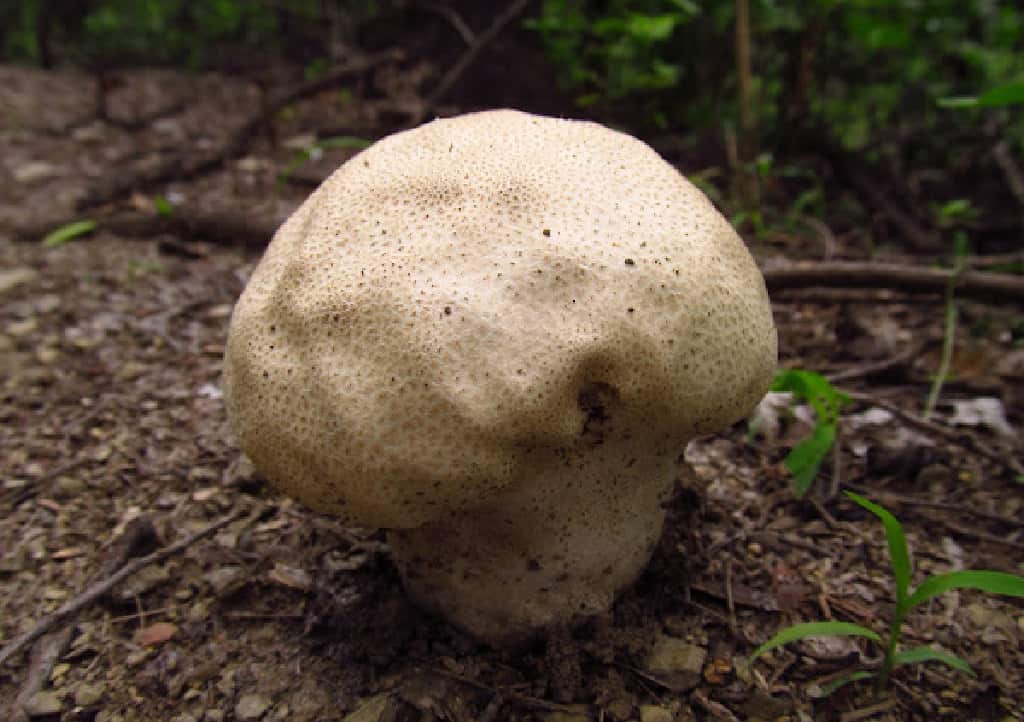
- Size: Skull-shaped Puffballs are typically 3 to 8 centimeters in diameter.
- Exterior: They have a unique skull-like shape with a rough surface.
- Interior: The interior remains white and firm when they are young and suitable for consumption.
- Habitat: These puffballs are often found in grassy areas and open meadows.
6. Pear-shaped Puffball (Lycoperdon pyriforme):
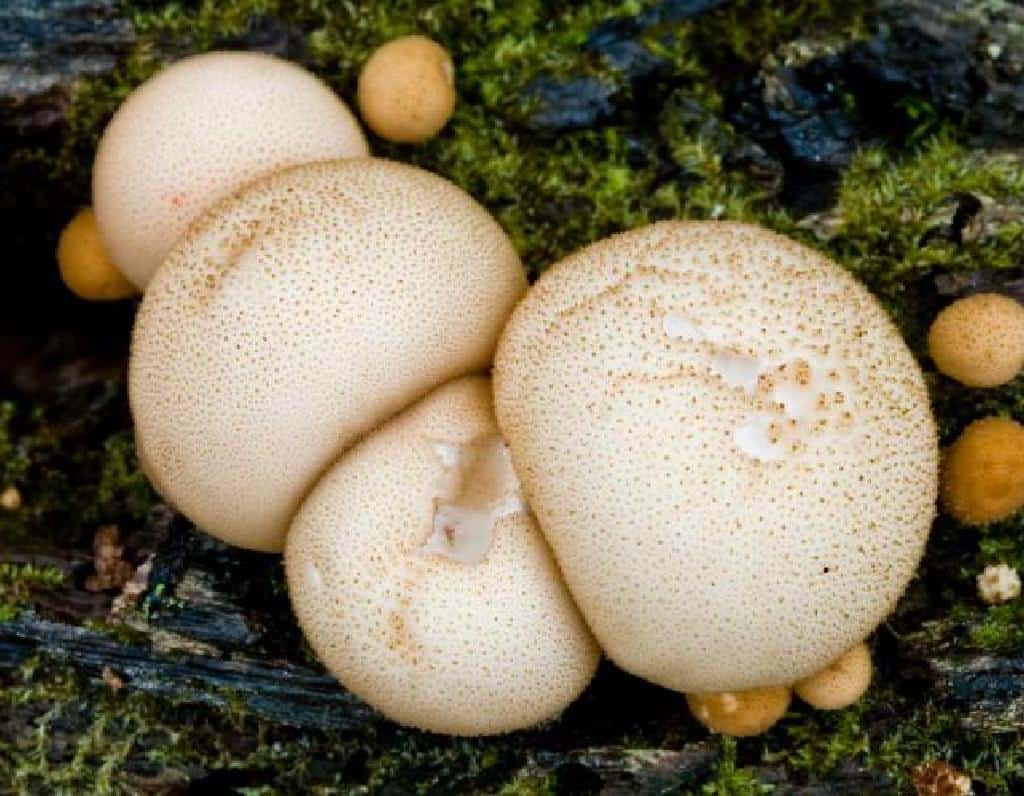
- Size: Pear-shaped Puffballs are around 3 to 7 centimeters in diameter.
- Exterior: They have a shape resembling a small pear and feature a smooth surface.
- Interior: The interior is white and has a pleasant texture, making them suitable for consumption.
- Habitat: These puffballs are often found in woodlands and meadows.
7. Spiny Puffball (Lycoperdon echinatum):
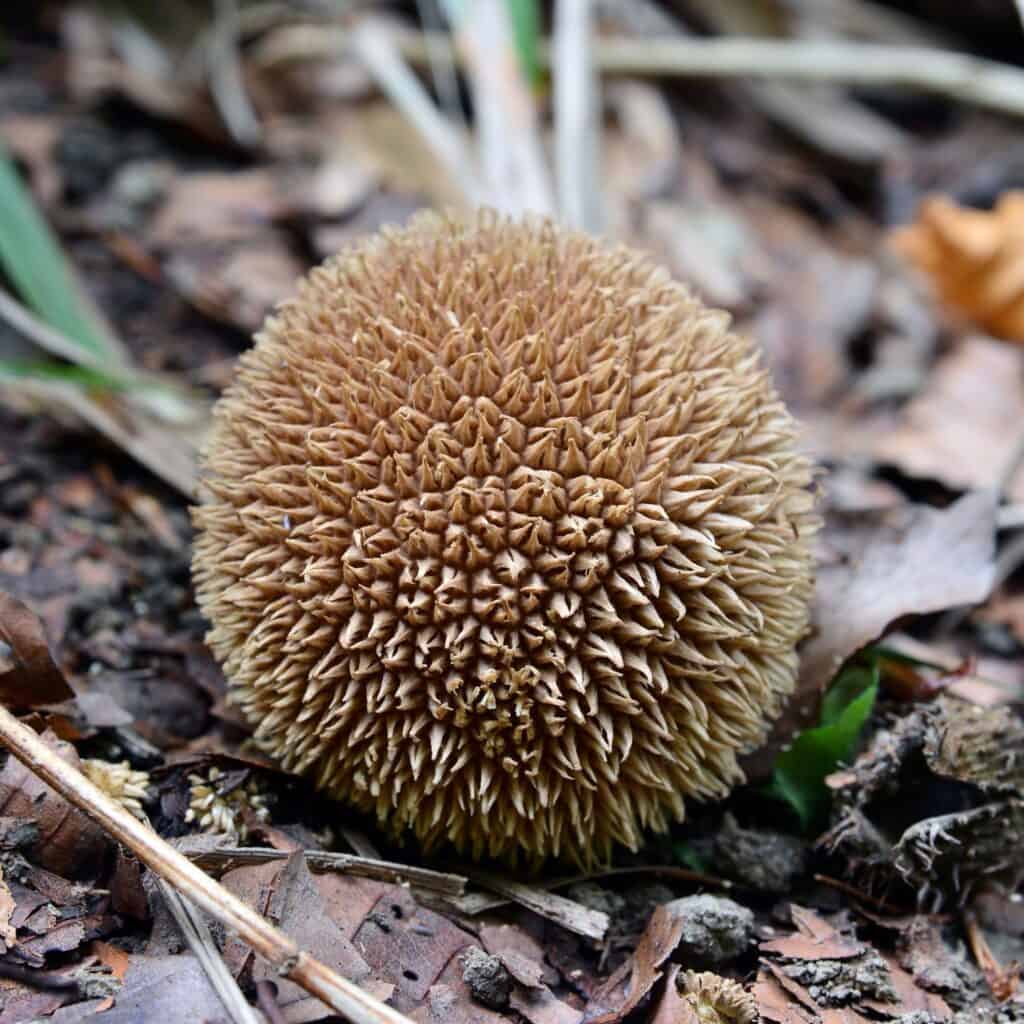
- Size: Spiny Puffballs range in size from 3 to 10 centimeters in diameter.
- Exterior: They are covered in small spines and appear light brown when mature.
- Interior: The interior remains white when young and is suitable for consumption.
- Habitat: Spiny Puffballs can be found in a variety of habitats, including woodlands and grassy areas.
Here are a few examples of the fascinating puffball mushrooms. You might come across them during your foraging adventures. While some are delectable edibles, others are better left in the wild due to their inedible or potentially toxic nature.
Learning to identify these species correctly is the first step in making the most of your encounters with these intriguing fungi.
Table: 7 Different Types of Puffball Mushrooms
| Type | Scientific Name | Size | Characteristics | Culinary Uses |
| 1. Giant Puffball | Calvatia gigantea | Can grow up to 1 m | Immense, pure white, and edible when young; becomes yellow-brown | Sliced and sautéed, used in various dishes |
| 2. Common Puffball | Lycoperdon perlatum | 3-8 cm in diameter | Small, white puffballs with a leathery exterior | Sliced, breaded, and fried as appetizers |
| 3. Gem-studded Puffball | Lycoperdon perlatum | 1-4 cm in diameter | Small, round puffballs covered in conical spines | Suitable for salads or sautéing |
| 4. Devil’s Snuffbox | Lycoperdon pulcherrimum | 2-8 cm in diameter | Creamy white with a delicate outer layer | Excellent for cream-based soups |
| 5. Skull-shaped Puffball | Bovista plumbea | 3-8 cm in diameter | Unique skull-like shape with a rough surface | Ideal for stuffing or roasting |
| 6. Pear-shaped Puffball | Lycoperdon pyriforme | 3-7 cm in diameter | Shaped like a small pear, with a smooth surface | Great for grilling or adding to pasta |
| 7. Spiny Puffball | Lycoperdon echinatum | 3-10 cm in diameter | Covered in small spines, light brown when mature | Best used for sauces or stir-fries |
Cultivating Puffball Mushrooms at Home
The idea of cultivating your own mushrooms, including puffballs, is enticing for many enthusiasts. While puffballs are more commonly found in the wild, it is possible to cultivate them at home under the right conditions. However, there are some key factors to consider. Do so before starting your home puffball cultivation journey.
1. Suitable Species:
- Edible Puffball Species: Some puffball species are more amenable to cultivation than others. The Giant Puffball (Calvatia gigantea) is one of the most popular choices due to its size and edibility when young. However, be aware that not all puffball species are suitable for cultivation.
2. Growing Medium:
- Substrate: Puffballs typically grow in the ground, so you’ll need a suitable growing medium, such as soil, compost, or a mixture of both. Ensure it’s well-draining and properly sterilized to minimize the risk of contamination.
3. Temperature and Humidity:
- Temperature: Puffballs thrive in a temperature range of 70-75°F (21-24°C). A warm, steady environment is crucial for their growth.
- Humidity: High humidity levels are essential, as puffballs require moisture to develop properly. You can achieve this with a humidifier or by creating a greenhouse-like environment.
4. Light and Ventilation:
- Light: Puffballs don’t require direct sunlight, but they do need indirect or artificial light for about 12 hours a day.
- Ventilation: It prevents harmful gas buildup and keeps the growing area healthy.
5. Harvesting:
When puffballs reach the size of a tennis ball but are still young and firm, it’s time to harvest. As they mature, their texture changes, and they may become less suitable for consumption.
How to Identify Poisonous Puffball Mushrooms
Identifying puffball mushrooms can be rewarding for foragers and mushroom fans. But, it’s vital to know how to tell the edible from the poisonous. Not all puffball mushrooms are safe to eat, and misidentification can have serious consequences. Here’s a guide on how to recognize potentially poisonous puffballs.
1. Texture and Firmness:
- Edible: Edible puffballs are firm and solid when young, with a pure white interior. When sliced open, they should have a consistent, mushroom-like texture.
- Poisonous: Avoid puffballs that are spongy, have a colorful interior, or are filled with dust-like spores. These characteristics can indicate inedibility or toxicity.
2. Color Changes:
- Edible: Young puffballs are typically white and remain so throughout their prime edibility.
- Poisonous: Puffballs that change color, especially to yellow, brown, or black, are often unsafe to eat. This transformation suggests the puffball is past its prime or possibly poisonous.
3. Spore Discharge Mechanism:
- Edible: Edible puffballs release spores through a pore at the top of the mushroom when they reach maturity.
- Poisonous: Puffballs that lack a clearly defined spore-releasing pore are best avoided, as they can be challenging to identify accurately and may belong to inedible or toxic species.
Conclusion
Exploring the world of puffball mushrooms offers a delightful culinary adventure. You might be drawn to the enormous Giant Puffball. Or, to the unique shapes of Skull-shaped and Pear-shaped puffballs. Each type has its own special traits and uses in the kitchen.
Remember to exercise caution when foraging for wild mushrooms and consult an expert if you’re unsure about a specific species. Puffball mushrooms, when harvested and prepared correctly, can add elegance to your meals. They make a captivating subject for any food lover.
FAQs
Are all puffball mushrooms edible?
Not all puffball mushrooms are edible. Some species are safe to eat and prized for cooking. But, others can be toxic or inedible. They pose health risks if eaten.
Where do puffball mushrooms grow?
Puffball mushrooms often grow in a variety of habitats, including forests, grasslands, and meadows. They like nutrient-rich soils and decaying organic matter. They are found in temperate regions around the world, especially in late summer and early autumn.
Are puffball mushrooms safe to eat raw?
Puffball mushrooms are generally safe to eat raw, provided they are edible varieties and free from contamination. However, cooking puffballs thoroughly is recommended to enhance their flavors and textures, as well as to ensure any potential harmful microorganisms or toxins are eliminated.
Do puffball mushrooms have any unique nutritional benefits?
Puffball mushrooms offer unique nutrition. They have lots of protein, fiber, vitamins, and minerals. They are rich in B vitamins, potassium, and antioxidants. These nutrients help overall health when eaten as part of a balanced diet.
What is the best time of year to forage for puffball mushrooms?
The best time to forage for puffball mushrooms is typically in late summer or early autumn, depending on the specific region and climate. During this time, the weather is good for puffball mushrooms. The conditions, such as temperature and humidity, are right for their growth. This leads to better chances of finding them.
How long do puffball mushrooms typically take to mature?
Puffball mushrooms typically take several weeks to mature. This time depends on things like temperature, humidity, and the availability of substrate. While some species may mature within a few weeks, others might take longer, especially under less favorable conditions. Monitoring the growth stages and physical characteristics of the puffball can provide insight into its maturity for harvesting.


